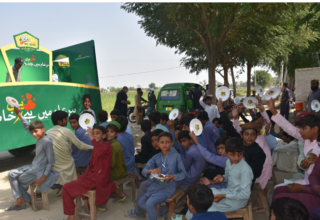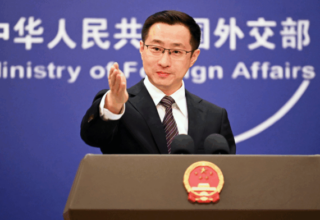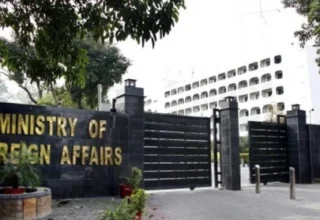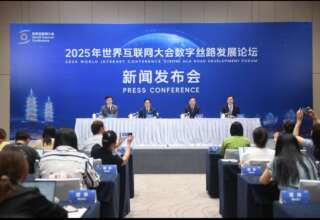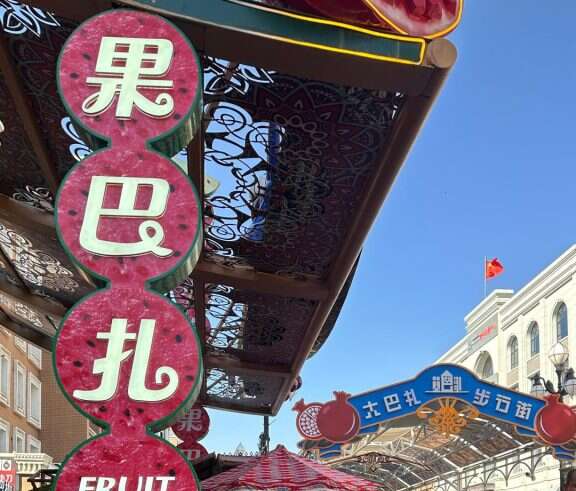
As part of the Overseas Chinese Uyghur community living in Rawalpindi, I had the incredible honour of a cultural and educational visit to China. The visit beginning from Xinjiang and spanning multiple cities concluded in Beijing. This journey carried deep personal significance, reconnecting me with my ancestral roots in Xinjiang. But it was not only a journey into my own history, culture, traditions and shared heritage, but also an opportunity to closely witness the social harmony, advance development and technological advancements in China.
Due to the Indo-Pak tensions and limited flight availability, I took the overland route to China. On May 18th, I began my journey from Pakistan via Khunjerab Pass. I entered China through the land border, arriving first in Tashkurgan and continuing onward to Kashgar, where I reached at 1:30 a.m. on May 20th. Despite the late hour, I was warmly welcomed and treated to a gracious dinner before checking into the hotel.
Our exploration of Kashgar began with a visit to the Kashgar Museum, which offered an enriching overview of the Xinjiang region’s history and culture.
We also visited the Old City of Kashgar, a place that resonates with centuries of Uyghur history. The narrow winding streets, earth-toned houses with intricately carved wooden doors.
The Id Kah Mosque, one of the largest mosques in China, stood gracefully with its yellow facade and peaceful courtyard filled with worshippers and visitors alike.One of the highlights of our cultural exploration was the Ban Chao Museum, dedicated to the famed Han Dynasty diplomat and military general who played a pivotal role in establishing the Silk Road.
We then flew to Urumqi, the bustling capital of Xinjiang. It had a very different vibe fast-paced, energetic, and modern, yet still proudly rooted in its cultural diversity. We visited the Xinjiang University, where we explored their history museum and exhibition. This gave me a broader perspective on the educational and ethnic integration efforts in the region.
The Xinjiang International Grand Bazaar was a sensory overload full of color, sound, and delicious smells. The evening concluded with a formal banquet hosted by the United Front Work Department, where the delegation shared thoughts and built deeper cultural bridges.
From Urumqi, we journeyed to Turpan, known for its hot climate and historical sites. We visited Jiaohe Ruins, one of the oldest and best-preserved earthen cities in the world, and saw the ingenious karez irrigation system. We also toured a local village fruit-packing facility, where modern practices meet traditional farming methods.
We then took a flight to Hangzhou, Zhejiang Province, and journeyed to Anji County in City. We explored the picturesque Yucun Village in Tianhuangping Town, a national model for ecological development. Once a heavily polluted mining town, it has been transformed into a vibrant green village embodying the principle that “lucid waters and lush mountains are invaluable assets”
Our next stop was Wuzhen, a centuries-old water town famous for its stone bridges, riverside homes, and traditional charm. As the permanent venue of the World Internet Conference, Wuzhen merges history with innovation.
Back in Hangzhou, we toured the Liangzhu Ancient City Ruins Park, a UNESCO World Heritage Site that testifies to the early urban civilization in the Yangtze River Delta over 5,000 years ago. The park revealed advanced water conservation systems, rice farming, and jade culture of prehistoric Liangzhu society.
At Alibaba Xixi Park, we witnessed the modern face of China’s digital economy. The corporate campus of Alibaba felt like a glimpse into the future, where tech-driven innovation supports everything from finance to logistics. It was inspiring to see how a local startup evolved into a global tech giant while maintaining a vibrant and eco-friendly workspace.
One of the most beautiful moments of the trip was our visit to the famous West Lake, a UNESCO World Heritage Site renowned for its poetic scenery and cultural legends. As dusk fell, we attended Impressions of the West Lake, an open-air performance on the water directed by renowned filmmaker Zhang Yimou. The dazzling lights, music, and dancers moving across the lake created an unforgettable visual poem.
Before concluding our visit in Hangzhou, we had the opportunity to explore the Zijingang Campus of Zhejiang University. As a student I was so Excited to visit one of China’s top academic institutions. The modern facilities, international environment, and academic atmosphere reflected China’s commitment to higher education and innovation.
Our arrival in Beijing marked the final phase of our journey. We began by visiting the National Museum of China, where thousands of relics and exhibitions walked us through China’s extensive history from early dynasties to the modern era. Just across the road, wetoured Tiananmen Square, one of the most iconic landmarks in China, and took a stroll along Qianmen Street, a lively pedestrian avenue rich with old Beijing charm. We also explored Daliulan, a restored historic alleyway reflecting the city’s hutong culture.
In the afternoon, we visited the Forbidden City, which is listed by UNESCO as the largest collection of preserved ancient wooden structures in the world.There,we saw impressive historical and cultural exhibits,including traditional costumes, ancient architecture, and everyday artifacts that helped us better understand Chinese traditional culture.
The following day, we visited the former site of the Mongolian School and the Chinese National Community Experience Hall, where we learned about the country’s approach to fostering unity among its many ethnic groups. Later, at the National Ethnic Culture Palace, we toured the Exhibition on Chinese National Community Consciousness, a thought provoking experience that reflected on diversity and nation-building with inclusivity at its core.
On our final morning, we enjoyed one last breakfast together before heading to the airport, carrying with us new friendships, unforgettable memories, and a strengthened sense of purpose. I returned home not only with memories but with a strengthened resolve to continue working for the betterment of the Overseas Chinese Pakistani community and to build a bridge of understanding between our two great nations China and Pakistan.
Long Live China Pakistan Friendship
By Nimra Azeem Khan

